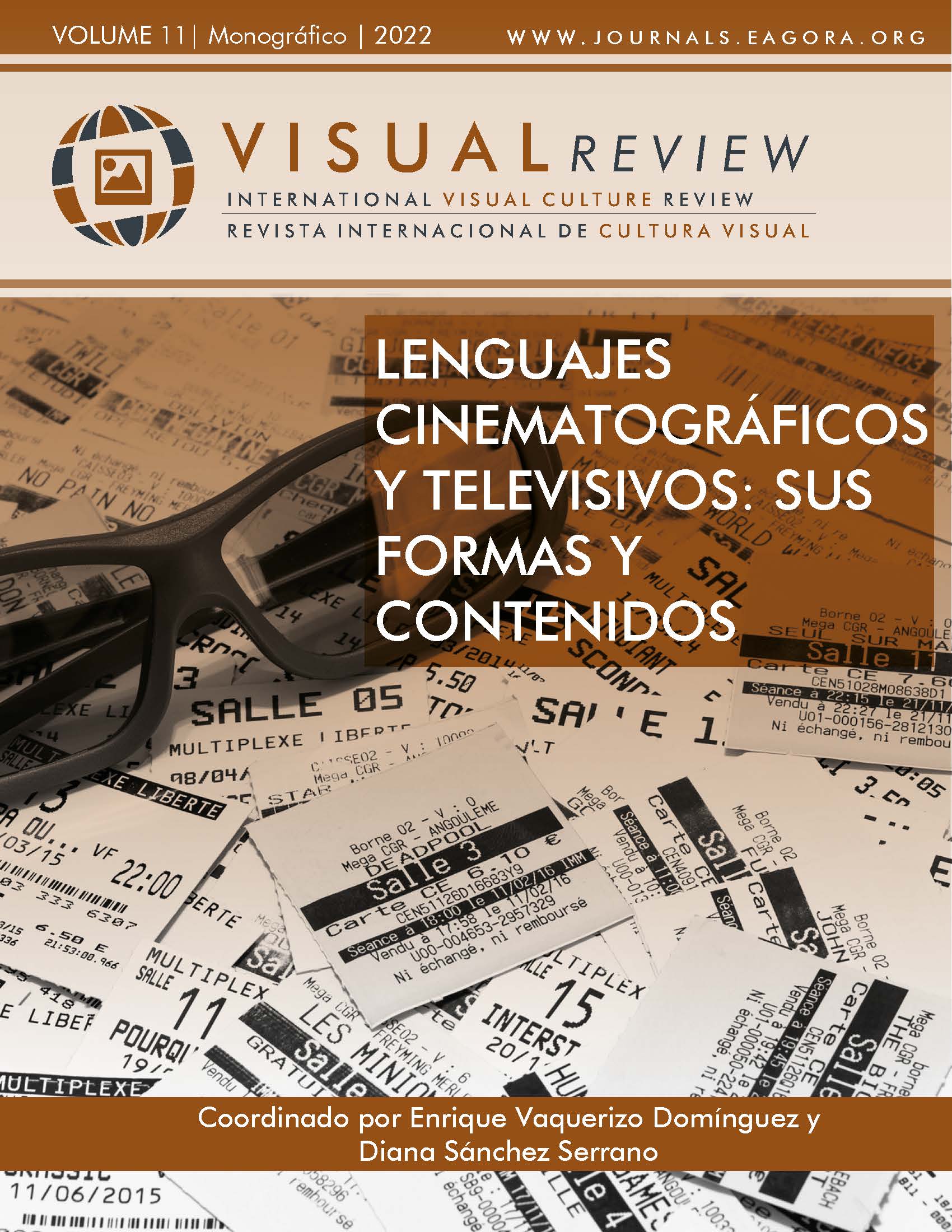O seletivo e meticuloso uso da cor no cinema
Potenciar valores emocionais e dramáticos na narrativa
DOI:
https://doi.org/10.37467/revvisual.v9.3698Palabras clave:
Cinema, Cor, Estético, Narrativa, RealismoResumen
Na primeira metade do século XX, a chegada da cor ao cinema deu-lhe um novo e muito relevante poder. Os significantes psicológicos e afetivos das mais variadas cores, bem aplicados, podem dotar a obra cinematográfica de uma extraordinária implicação narrativa que provoca forte impacto afetivo e dramático no espectador.Ao longo deste trabalho pretendemos refletir sobre as possibilidades que a cor trouxe ao cinema, indo além da estética e assumindo um lugar de destaque no campo da narrativa.
Descargas
Estadísticas globales ℹ️
|
869
Visualizaciones
|
409
Descargas
|
|
1278
Total
|
|
Citas
Barbosa, P. R. (2007). A primeira cor no cinema: Tecnologia e Estética do Filme Colorido até 1935. Dissertação apresentada ao curso de Mestrado da Escola de Belas Artes da Universidade Federal de Minas Gerais. Belo Horizonte, Brasil.
Caldevilla-Domínguez, D. (2009). Neorrealismo Italiano. Frame: revista de cine de la Biblioteca de la Facultad de Comunicación de Sevilla. 4. 23-35. https://biblus.us.es/fama2/com/frame/frame4/estudios/1.4.pdf
Casas, Q. (2006). Rouben Mamoulian: a técnica ao serviço da arte. Em M. C. Ferreira (Org.), Rouben Mamoulian (pp. 10 - 61). Cinemateca Portuguesa - Museu do Cinema.
Dietrich, M. (1986). Marlene D. Lisboa: Publicações Dom Quixote.
Farina, M., Perez, C., & Bastos, D. (2006). Psicodinâmica das cores em comunicação. Edgard Blucher.
Ferreira, C. M. (2011). Cinema - Uma Arte Impura. Afrontamento.
Grazzini, G. (1985). Fellini Por Fellini. Publicações Dom Quixote.
Jimeno-Aranda, R., & Parras-Parras, A. (2020). La influencia de la fotografía americana del siglo XIX en el imaginario cinematográfico del western clásico. El caso de Río Rojo de Howard Hawks (1948). Historia y Comunicación Social, 25(1), 223-238. https://doi.org/10.5209/hics.63949 DOI: https://doi.org/10.5209/hics.63949
Mamoulian, R. (2006). Alguns problemas na realização de filmes a cores. In M. C. Ferreira (Org.), Rouben Mamoulian (pp. 82 - 89). Lisboa: Cinemateca Portuguesa - Museu do Cinema.
Mamoulian, R. (2006). Controlando a cor para efeitos dramáticos. In M. C. Ferreira (Org.), Rouben Mamoulian (pp. 138 - 151). Cinemateca Portuguesa - Museu do Cinema.
Martin, M. (2005). A Linguagem Cinematográfica. Lisboa: Dinalivro.
Paganelli, G. (2009). Sinais de Vida - Werner Herzog e o Cinema. Edições 70.
Pereira, I. B., & Ferreira, A. T. (2011, Jan./Jun.). A Cor Como Elemento Constitutivo da Linguagem e Narrativa Cinematográfica. Unoesc & Ciência - ASHS, 17 - 28.
Sadoul, G. (1993). Dicionário dos Cineastas. Lisboa: Livros Horizonte.
Sanzio, A., & Thirard, P.-L. (1988). Luchino Visconti. Publicações Dom Quixote.
Spergel, M. (2006). Reinventando a realidade: a arte e a vida de Rouben Mamoulian. In M. C. Ferreira (Org.), Rouben Mamoulian (pp. 62 - 73). Cinemateca Portuguesa - Museu do Cinema.
Street, S. (2013). Consciência das Cores: Natalie Kalmus e o Technicolor na Grã-Bretanha. Revista Laika, 1- 8.
Strick, P. (1963). Antonioni (Motion Monograph). Motion Publications.
Tiski-Franchowiak, I. (2000). Homem, comunicação e cor. Ícone.
Torres, M. J. (2006). O Mamoulian Touch ou a Arte Suprema do Musical Integrado. In M. C. Ferreira (Org.), Rouben Mamoulian (pp. 106 - 127). Cinemateca Portuguesa - Museu do Cinema.
Vacche, A. D., & Prince, B. (2006). Color: The Film Reader. Routledge.
Descargas
Publicado
Cómo citar
Número
Sección
Licencia
Los autores/as que publiquen en esta revista aceptan las siguientes condiciones:
- Los autores/as conservan los derechos de autor.
- Los autores/as ceden a la revista el derecho de la primera publicación. La revista también posee los derechos de edición.
- Todos los contenidos publicados se regulan mediante una Licencia Atribución/Reconocimiento-SinDerivados 4.0 Internacional. Acceda a la versión informativa y texto legal de la licencia. En virtud de ello, se permite a terceros utilizar lo publicado siempre que mencionen la autoría del trabajo y a la primera publicación en esta revista. Si transforma el material, no podrá distribuir el trabajo modificado.
- Los autores/as pueden realizar otros acuerdos contractuales independientes y adicionales para la distribución no exclusiva de la versión del artículo publicado en esta revista (p. ej., incluirlo en un repositorio institucional o publicarlo en un libro) siempre que indiquen claramente que el trabajo se publicó por primera vez en esta revista.
- Se permite y recomienda a los autores/as a publicar su trabajo en Internet (por ejemplo en páginas institucionales o personales), una vez publicado en la revista y citando a la misma ya que puede conducir a intercambios productivos y a una mayor y más rápida difusión del trabajo publicado (vea The Effect of Open Access).













